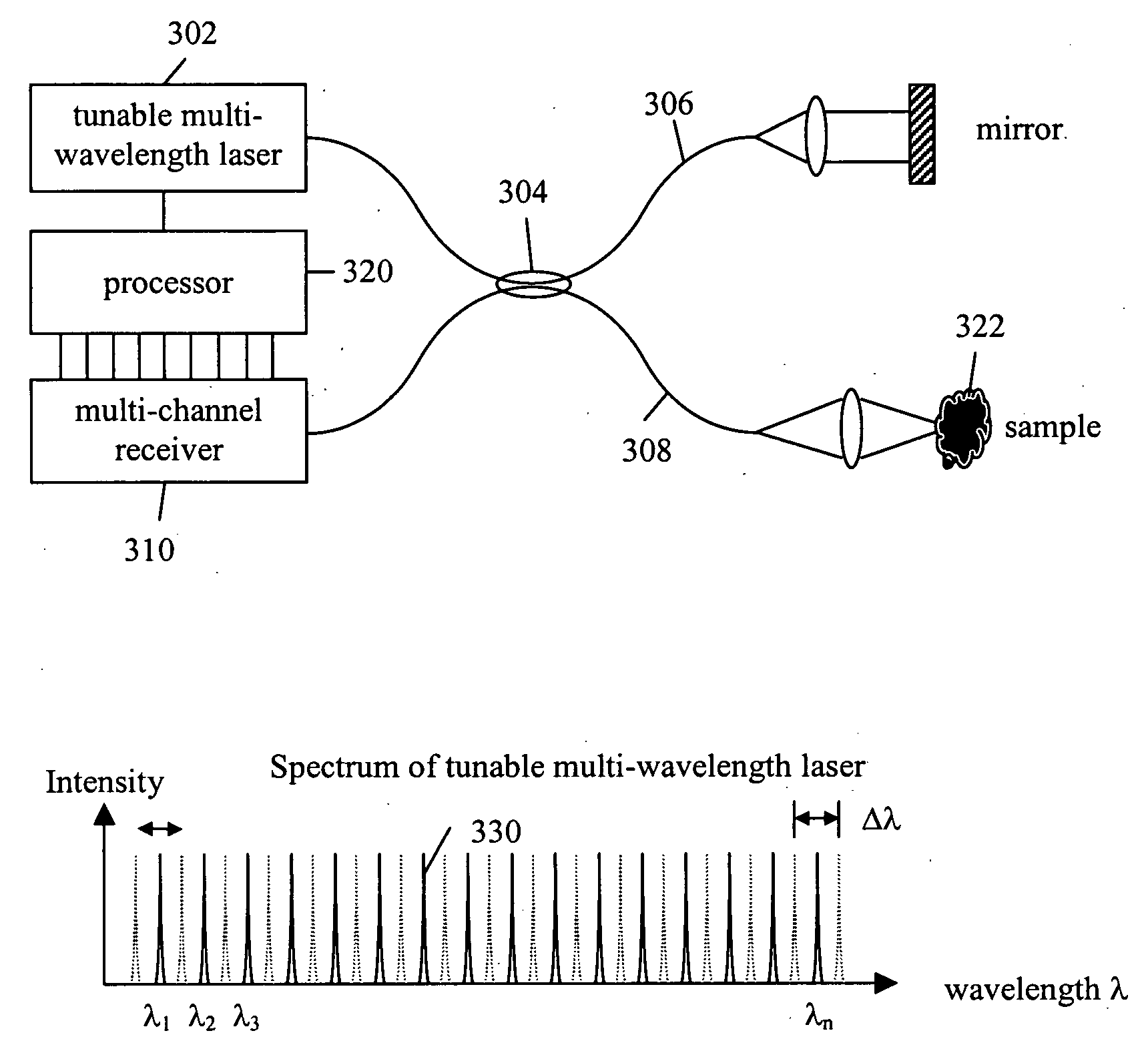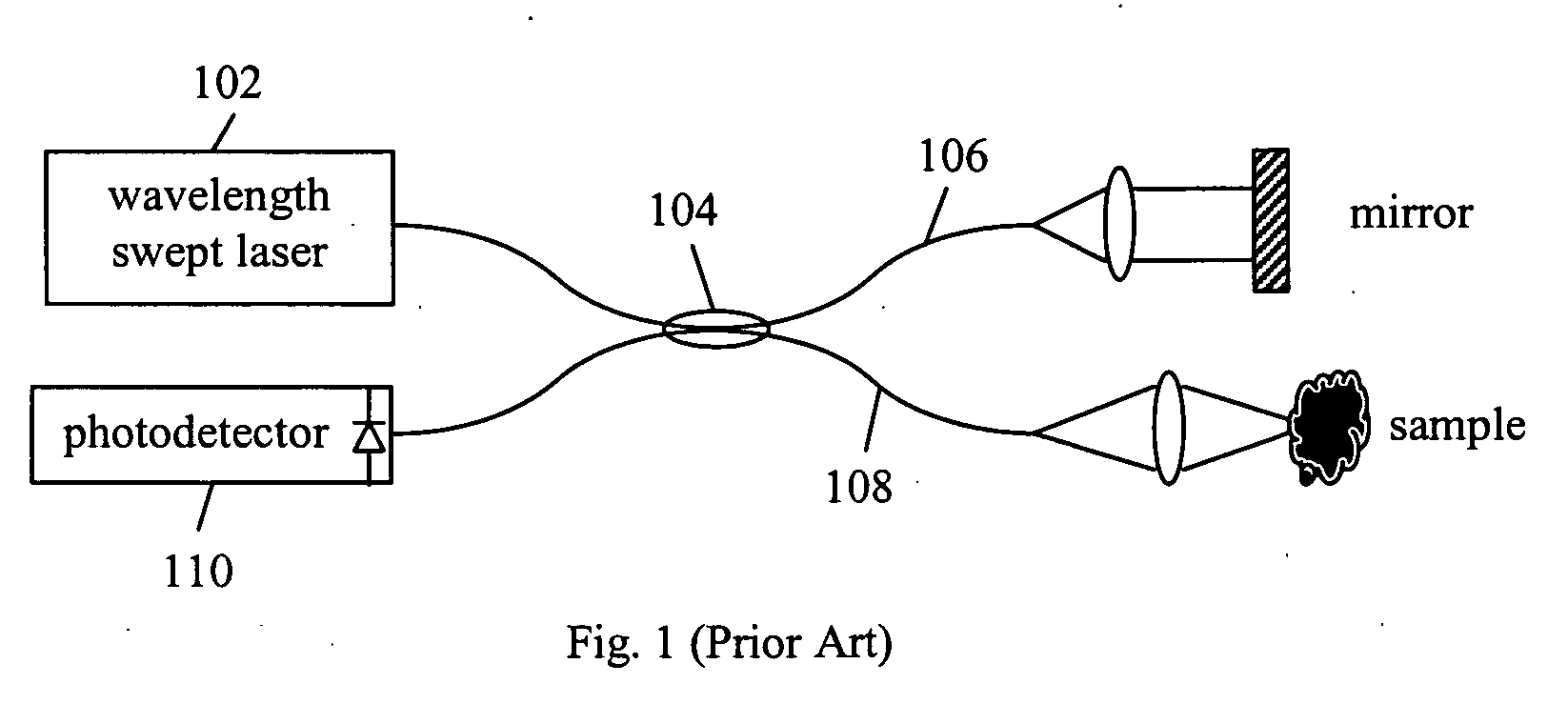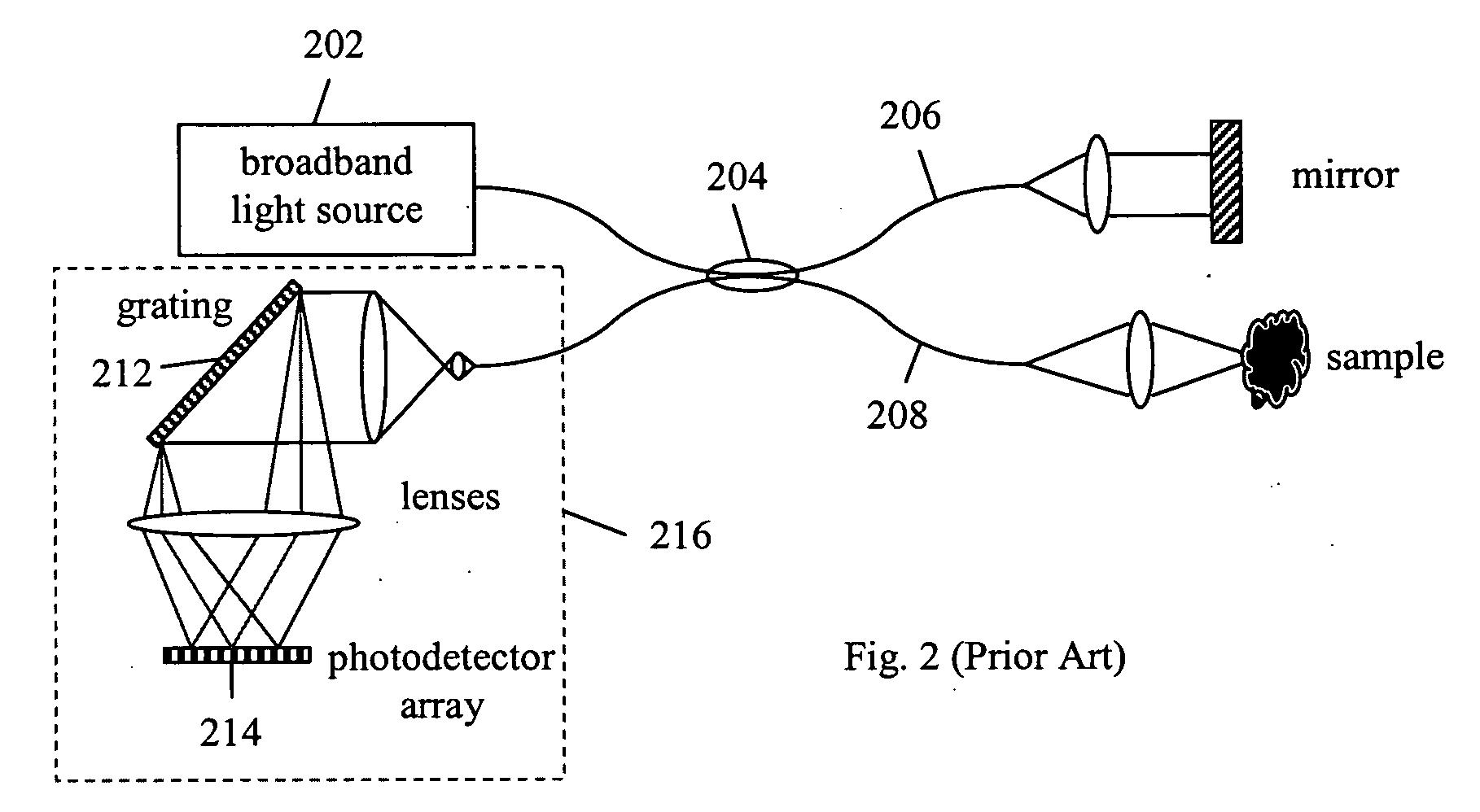Fourier domain optical coherence tomography employing a swept multi-wavelength laser and a multi-channel receiver
a multi-wavelength laser and optical coherence tomography technology, applied in the field of optical coherence tomography, can solve the problems of increasing the signal-to-noise ratio, reducing the mechanical scanning range, and still needing mechanical scanning, so as to reduce the cost of an fd-oct system, reduce the sweep range for each lasing wavelength of a multi-wavelength laser, and reduce the cost
- Summary
- Abstract
- Description
- Claims
- Application Information
AI Technical Summary
Benefits of technology
Problems solved by technology
Method used
Image
Examples
Embodiment Construction
[0039]FIG. 3 shows a basic configuration of the present invention. Light from a tunable multi-wavelength laser 302 is split via a beam splitter, for example, fiber coupler 304, into a reference arm 306 and a sample arm 308 of an interferometer. Light returning from the reference arm and the sample is combined, either with the same splitter as shown in FIG. 3 or another beam combining element as is known in the interferometry art. The combined, interfered light is sent to a detector, in this case, multi-channel receiver 310. A processor 320 obtains the spectral interferogram data from the multi-channel receiver 310, synchronized with the sweeping of the multi-wavelength laser 302. For example, the circuitry which drives the frequency sweep of the laser can supply a synchronization signal to the processor.
[0040] The processor combines the samples from the individual channels to form a full spectral interferogram and carries out a Fourier transform of the spectral interferogram to pro...
PUM
 Login to View More
Login to View More Abstract
Description
Claims
Application Information
 Login to View More
Login to View More - R&D
- Intellectual Property
- Life Sciences
- Materials
- Tech Scout
- Unparalleled Data Quality
- Higher Quality Content
- 60% Fewer Hallucinations
Browse by: Latest US Patents, China's latest patents, Technical Efficacy Thesaurus, Application Domain, Technology Topic, Popular Technical Reports.
© 2025 PatSnap. All rights reserved.Legal|Privacy policy|Modern Slavery Act Transparency Statement|Sitemap|About US| Contact US: help@patsnap.com



